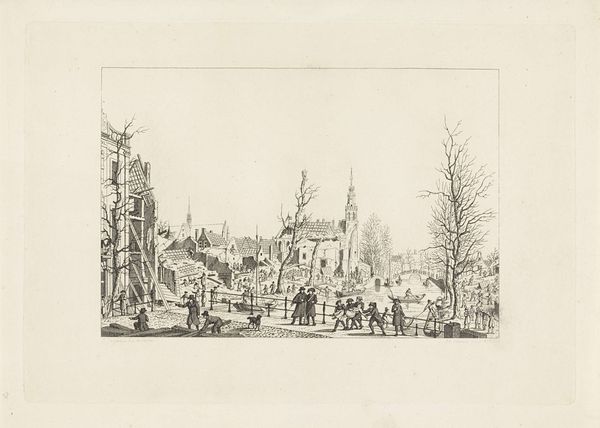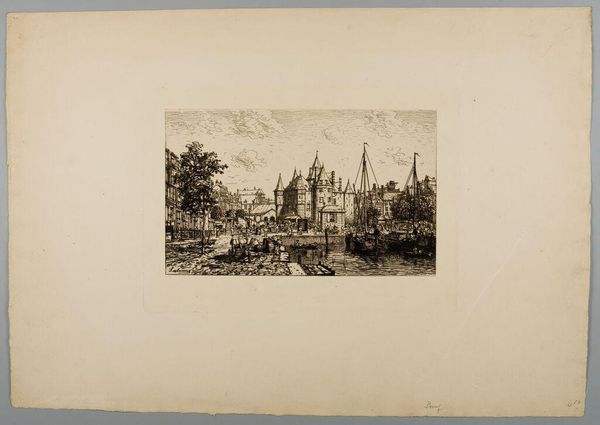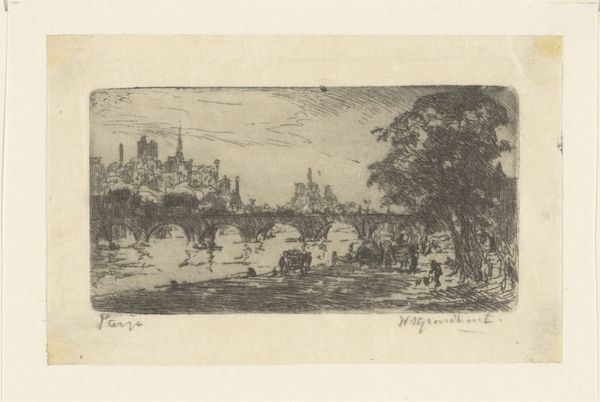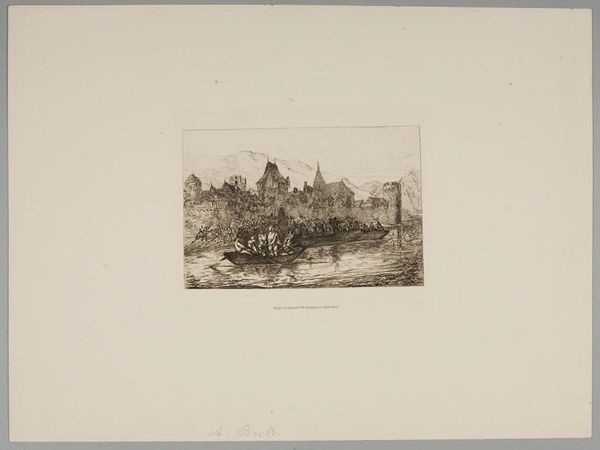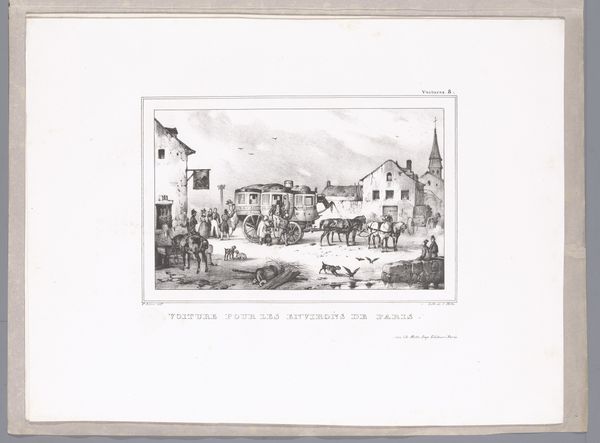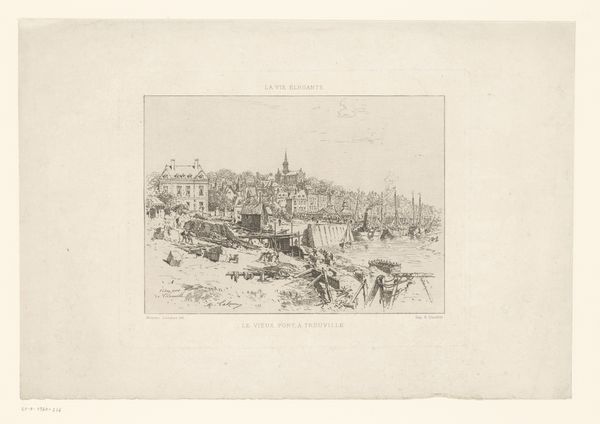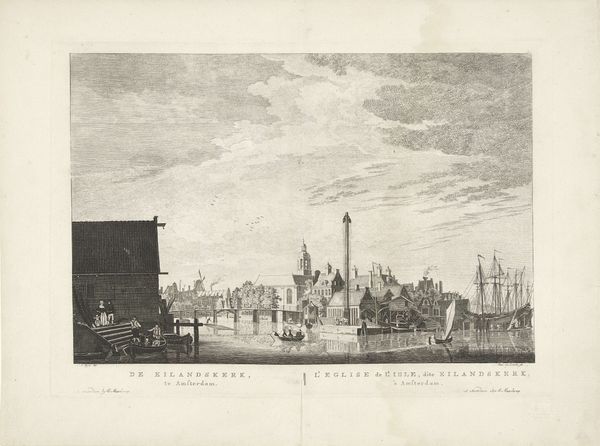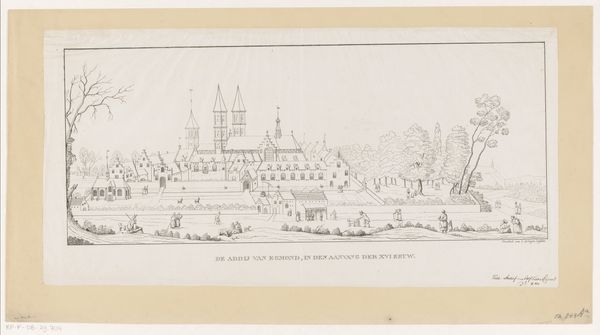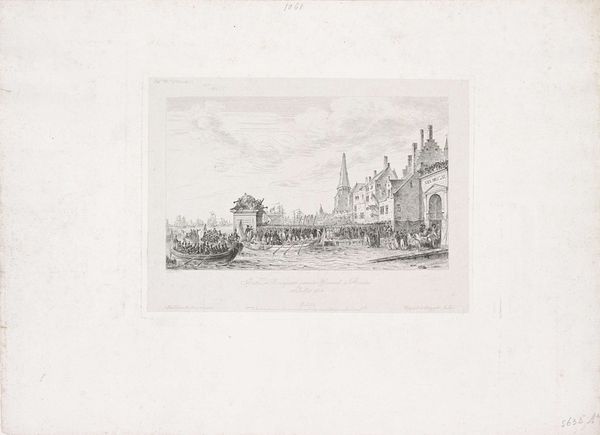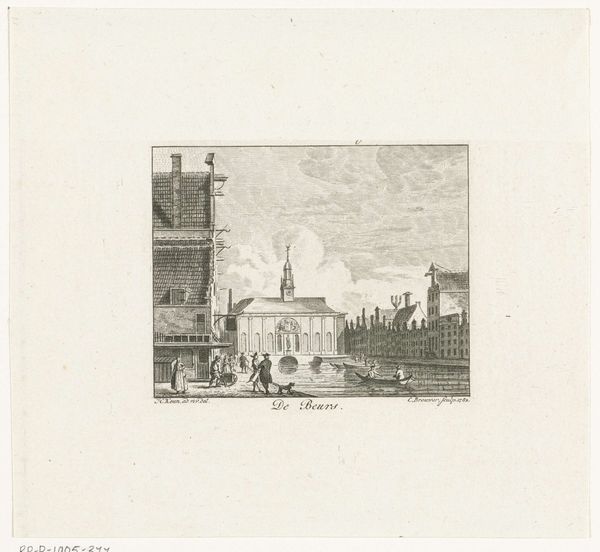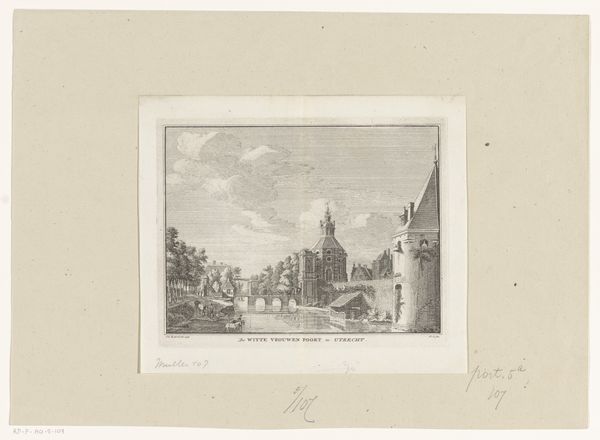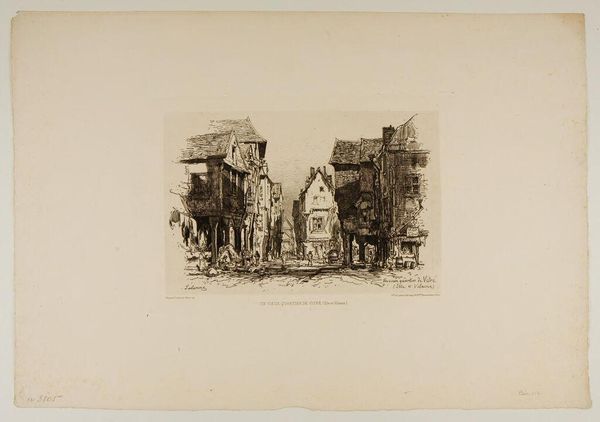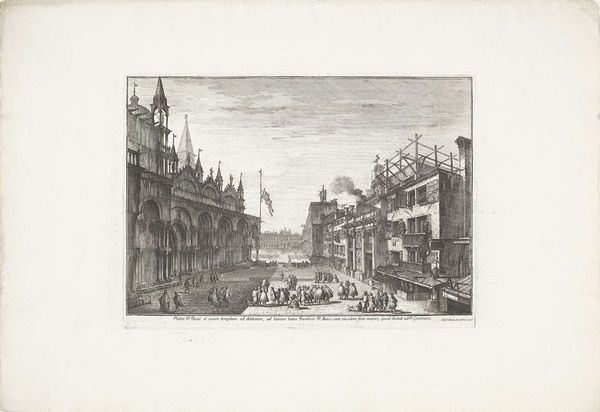
drawing, print, engraving
#
drawing
# print
#
old engraving style
#
romanticism
#
line
#
cityscape
#
history-painting
#
engraving
#
monochrome
Dimensions: height 143 mm, width 225 mm
Copyright: Rijks Museum: Open Domain
Curator: We're looking at "Aankomst van Napoleon te Antwerpen, 1803" by Etienne Acille Réveil, made sometime between 1835 and 1840. It's an engraving, a monochromatic print depicting a historical moment. Editor: My first impression is of a somewhat subdued grandiosity. The detail is incredible given the medium, but there's also a coolness, an almost detached quality, despite the obvious attempt to capture a triumphant event. Curator: The coolness you observe could be seen as a reflection of the shifting political sands of the period, don't you think? By the 1830s, Napoleon's star had fallen. This work, created decades after the depicted event, exists in a historical context marked by post-Napoleonic Europe’s struggle to reconcile with his legacy. The engraving itself is participating in the construction, perhaps even the sanitization, of that legacy. Editor: That's an interesting point. I’m drawn to the ways the artist uses linear perspective to guide the viewer's eye. Note how the lines converge on Napoleon's arrival, underscoring his significance while also creating depth within a relatively flat plane. Symbolically, water often represents transition, passage, and the crossing of boundaries. So, Napoleon's arrival by boat emphasizes his movement, both literally and metaphorically, into a new phase or domain. Curator: Absolutely. This piece also showcases the dynamics of power and representation, the image deliberately promotes a very particular and constructed version of Napoleonic rule for public consumption. I think it is critical to remember how representations, then and now, intersect with issues of social control, historical narrative and collective memory. Who benefits from portraying Napoleon as a benevolent leader? Editor: Consider the repetition of architectural motifs like arches and columns. Arches, historically associated with victory and triumphal entry, create a visual rhythm that reinforces the celebratory atmosphere. And what about the gaze of the crowds? All are looking toward one central point. Curator: Precisely! Their uniform gaze underscores the illusion of collective consent. However, we should also acknowledge the voices missing from this supposed unified expression. Which groups, which identities are deliberately suppressed in this framing? The romantic, stylized depiction is hardly representative of all. Editor: Agreed. Looking at it now, it is quite chilling. But it also goes to show you how powerful art can be at manipulating a message, either consciously or unconsciously. Curator: A powerful reminder to interrogate historical representations and to ask ourselves—whose story is being told, and whose is being omitted?
Comments
No comments
Be the first to comment and join the conversation on the ultimate creative platform.
